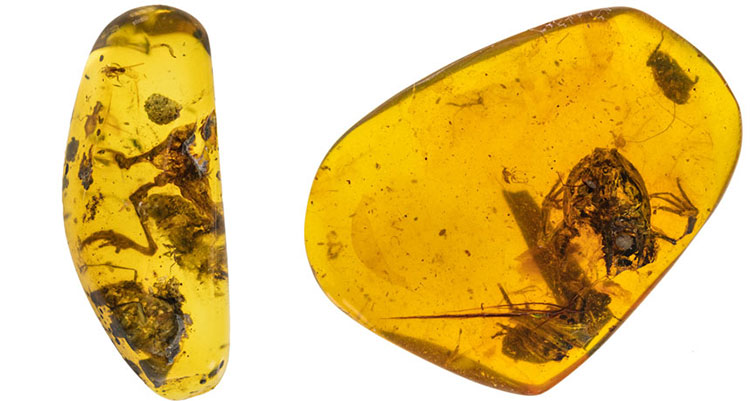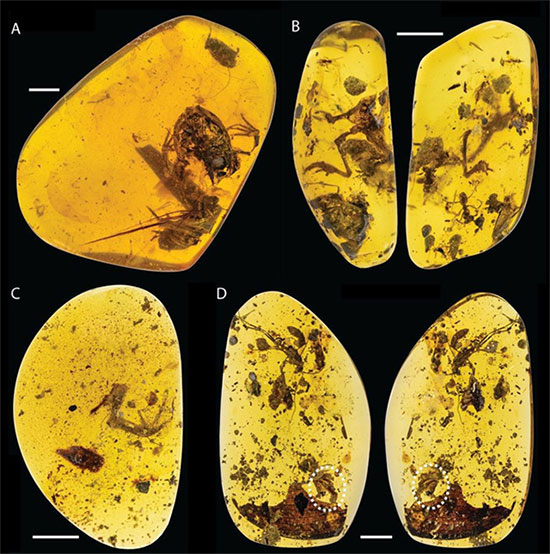Finding frogs trapped in amber 99 million years
Stuck in amber, a 99 million-year-old frog fossil reveals that this amphibian has lived in a humid tropical climate.
About 99 million years ago, tiny frogs moved in a humid tropical forest - and some were not lucky enough to stab into sap. Four new frog fossils have been described, preserved in amber, giving the earliest direct evidence of an ancient frog living in the humid tropics - like many modern amphibians.

These ancient frogs are very much like a group of modern frogs including purple toad.
No frog fossils are complete, making it difficult to place them in frog genealogies: One has a skull and another has a frog appearance, despite magnetic resonance imaging, no substance. Which bone remains inside the fossil? So the researchers called all four fossils Electrorana limoae (electrum is amber and rana are frogs) in a study published in Science Reports on June 14. Concerning surgery, these ancient frogs are very much like a modern frog group with purple toad.

Photo of four frog fossil specimens - (Photo from Lida Xing).
Fossil records include relatively few frogs, despite the history of more than 200 million years of amphibians. According to research co-author David Blacburn, an amphibian biologist at the Florida Museum of Natural History in Gainesville, frog fossils exist to show that frogs look obvious - like frogs - hundreds of millions of years.'The aspects that make them diverse are not skeletons, but their ecology, natural history, reproduction patterns. Things are hard to find in fossil records'.
What makes these amber specimens so remarkable is that the amber pieces contain spiders, velvet worms and preserved bamboos - all of which indicate a tropical environment. These ancient ecological evidence gives scientists a rare view of the life and times of ancient tropical frogs.
- The dragonfly trapped 100 million years in amber
- Discovered the dead body stuck in amber 99 million years
- Video: 49 million year old spider fossil
- Discovered 23 million-year-old insect fossils
- Discover intact marine life in amber 99 million years
- The discovery of gecko fossils lies in amber dating from nearly 100 million years
- Mushrooms are 50 million years old in amber mass
- Amazingly discovered about the 100 million-year-old bird in amber
- Young snakes die hard in amber graves 99 million years
- Dead bugs stuck in 99 million years of amber and pollen
- Found samples of amber weighing more than 2kg in Kaliningrad
- India discovered amber plates dating back 50 million years
 Discovered an ancient centipede fossil 99 million years old
Discovered an ancient centipede fossil 99 million years old Discovered bat-like dinosaurs in China
Discovered bat-like dinosaurs in China Discovered a 200-year-old bronze cannon of the coast
Discovered a 200-year-old bronze cannon of the coast Discover 305 million-year-old spider fossils
Discover 305 million-year-old spider fossils